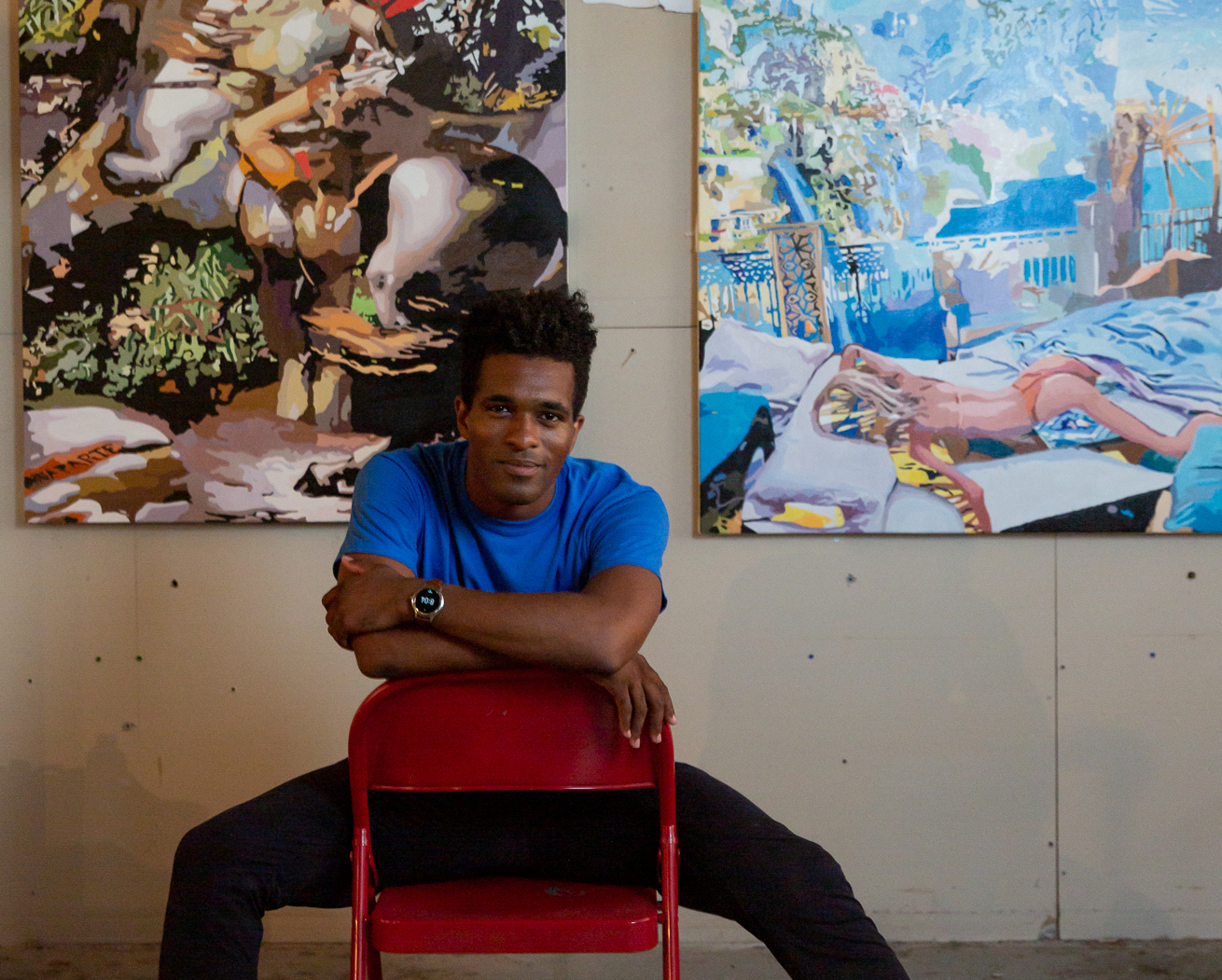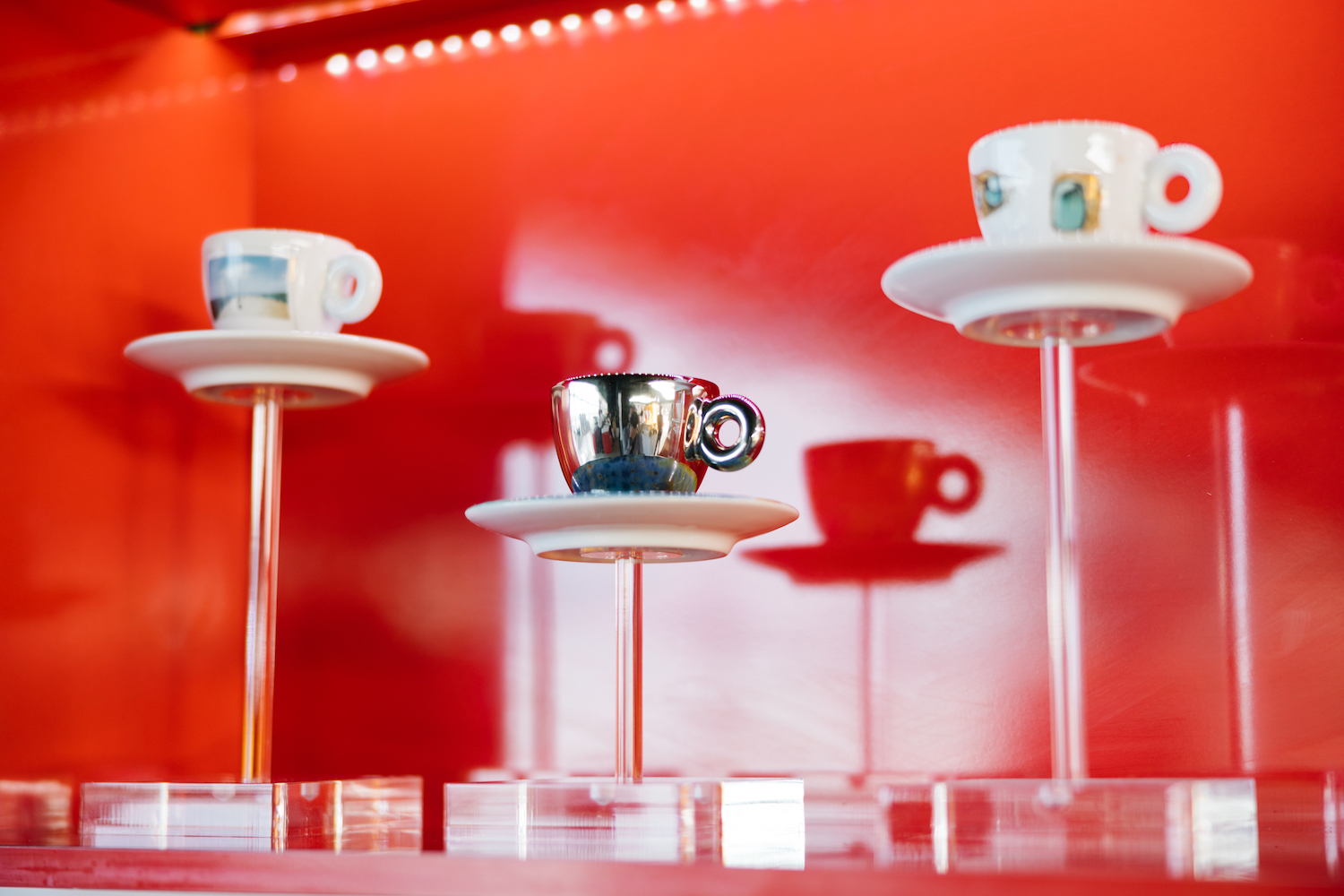The work of Brooklyn-based artist Darryl Westly is a study on the beauty of duality. His recent exhibition at PARISTEXASLA “Interior/Exterior” (November 16–December 21, 2019) touched upon this double detail from the beginning, with its title referencing a deeper meaning. While it was Westly’s first solo show, it surely didn’t appear that way. On view were Westly’s hyper-realistic oil on canvas paintings inspired by internet culture, and how representation and identity is presented on such an ever-shifting platform—a look into our culture, which at times can feel vapid and contrived, or transparent and authentic.
“Westly’s work alludes to a mental space, most likely on a screen reflecting back at you, which compounds into a physical space, such as a list of handwritten hashtags or an intimate selfie snapped in some exotic bathroom beyond,” said PARISTEXASLA’s Director Hilde Lynn Helphenstein. “That place between one’s mind and body is the vortex of the show.”
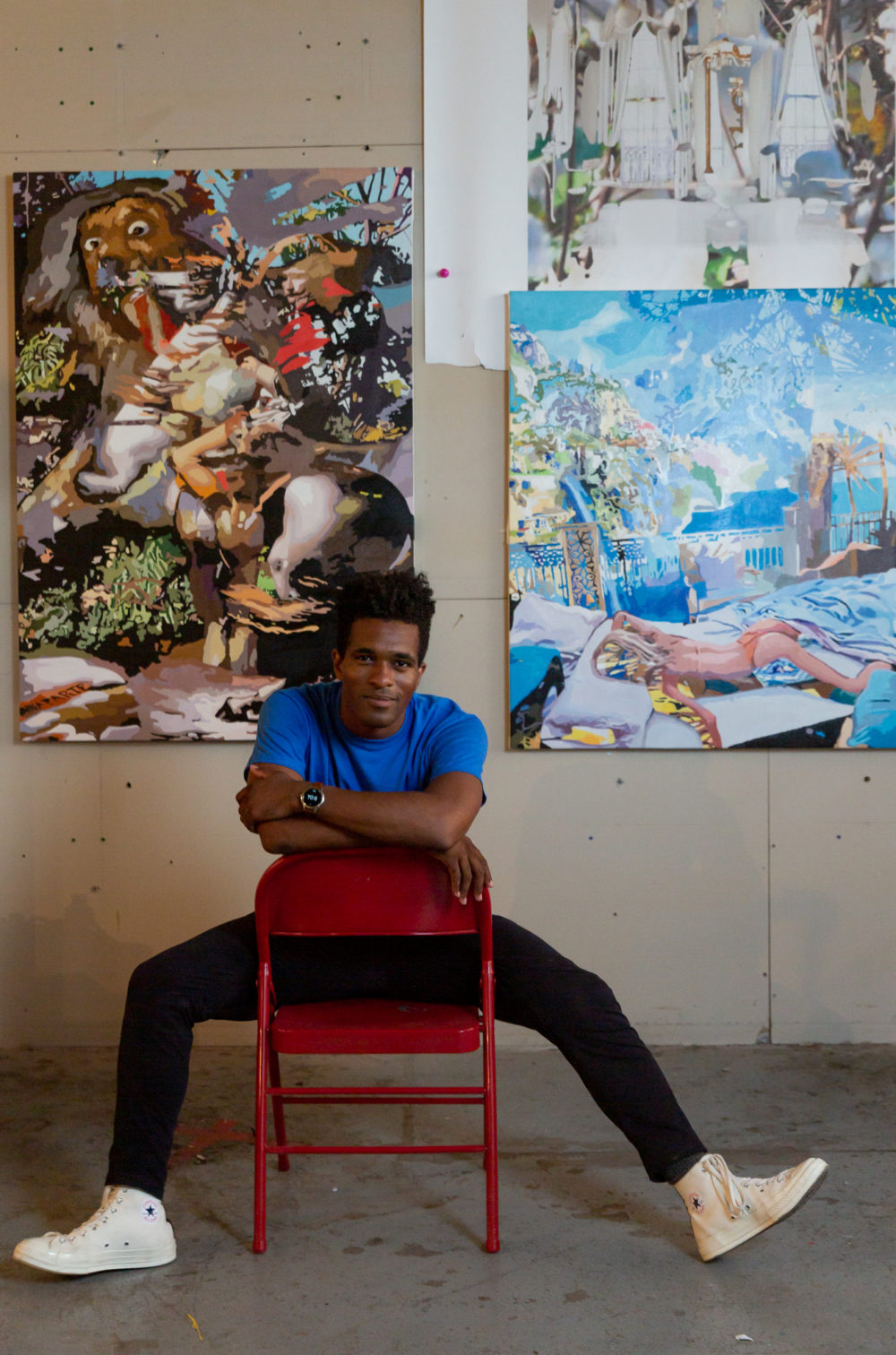
Portrait of Darryl Westly by Ariana McLaughlin.
Courtesy of PARISTEXASLA.
From afar, pixelated environments and disjointed landscapes drew us in, while up close we saw a deeper examination. Culture and ethnicity, as seen through our screens, was seen portrayed through Westly’s layered aesthetic, melding the mental and physical, the historic and present day, and the reality and performance of today’s people. In “Interior/Exterior,” we saw many blurred lines beyond the screen; beyond the canvas.
After the show closed, Whitewall spoke with Westly about how his creative practice has evolved—from graduating from Cooper Union and working for Jeff Koons, to today.
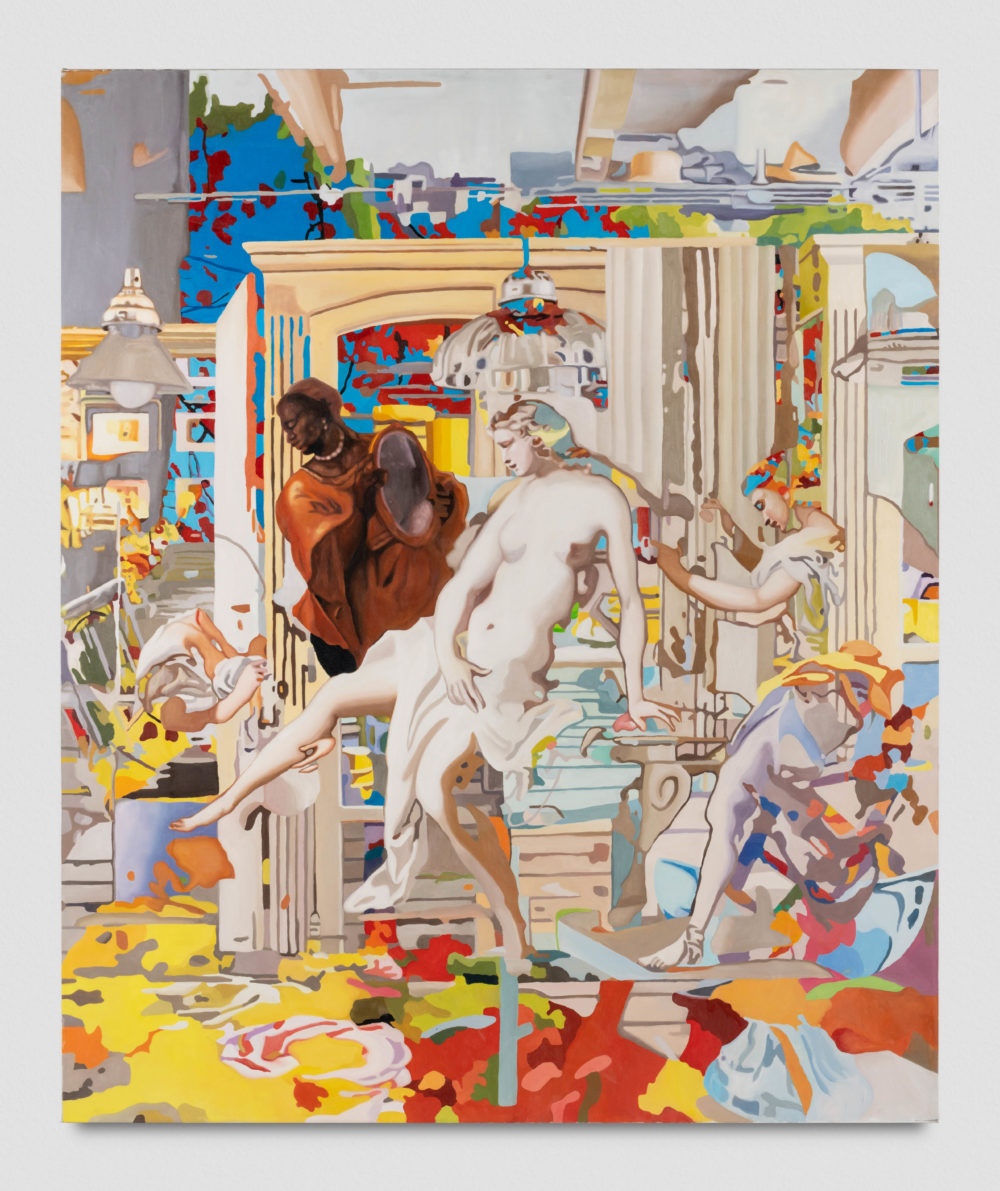
Darryl Westly
Bathsheba, 2019
Courtesy of PARISTEXASLA.
WHITEWALL: Tell us a bit about your creative background leading up to today.
DARRYL WESTLY: I originally found interest in art through a passion for drawing and storytelling that was fostered by my father after he introduced me to comic books as a young child. It wasn’t until high school that I was introduced to art history through a Chicago based arts education program called Gallery 37, which offered advanced classes in creative disciplines such as drawing and painting to students who were able to test into its program. It was during this time that I learned of Jasper Johns and Jeff Koons—two artists whose works had a profound impact on me, my work, and my decision to move to New York, where I first attended Pratt Institute and then Cooper Union to complete my BFA.
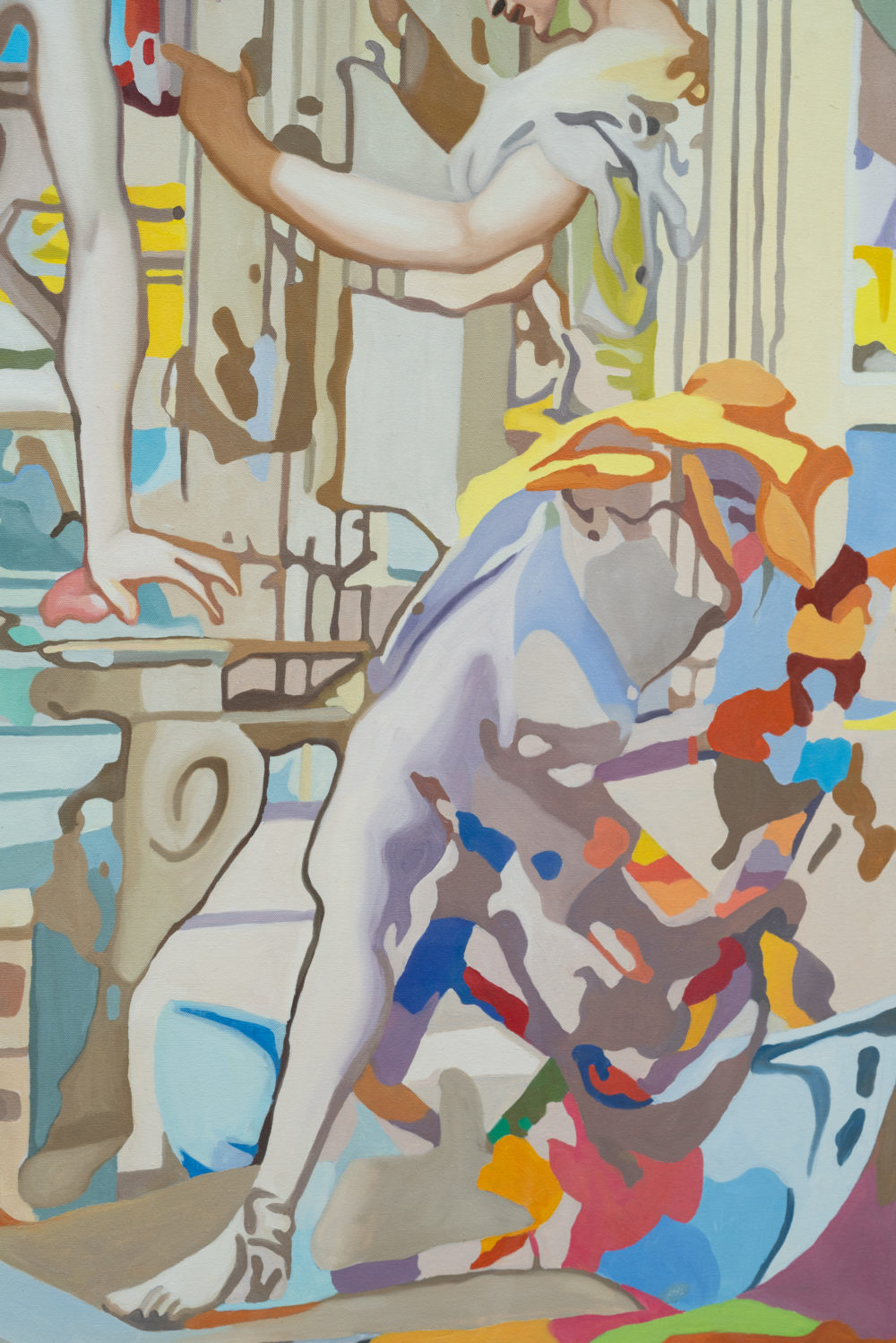
Darryl Westly
Bathsheba, 2019
Courtesy of PARISTEXASLA.
WW: You mentioned you attended Pratt (where you enrolled in the Pratt Institute Sculpture Program), and graduated from Cooper Union with your BFA in 2014—a very impactful space to sharpen your tools in. What did you take away most from your time there?
DW: Yes, Cooper Union gave me a deep and unique understanding of how art can be used as a means to communicate and describe ideas otherwise ineffable and or unpalatable.
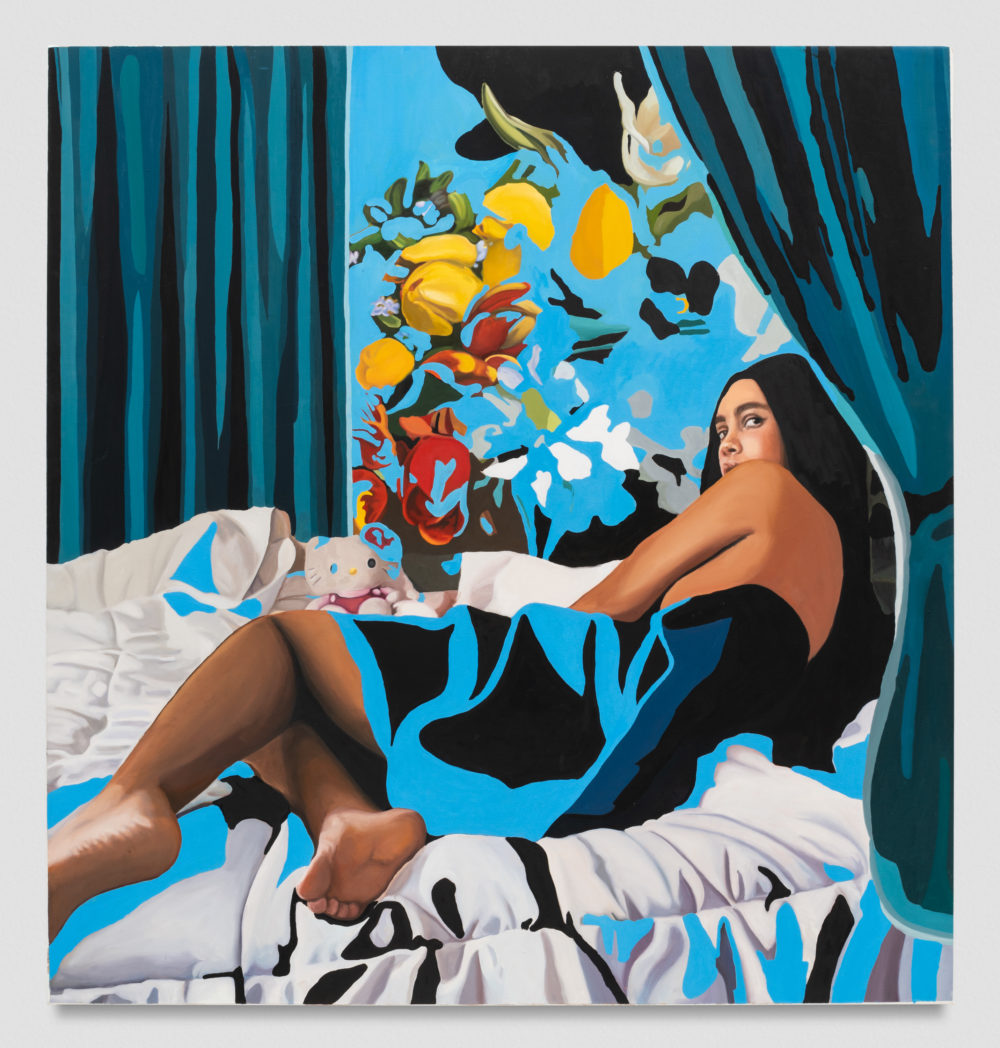
Darryl Westly
Odalisque (Jules), 2019
Courtesy of PARISTEXASLA.
Free Cooper, a grassroots organization started by Cooper students Victoria Sobel, Joe Riley, and Casey Gollan was a large part of my experience as a student at Cooper Union. The fear that the school which had traditionally offered free tuition to all those accepted would no longer do so made apparent in me and many of my classmates the importance of believing in your agency as an artist. One of my professors put it succinctly, “to be an artist is to be a problem solver.”
WW: After graduating, you were recruited to work as a finish painter in Jeff Koons’ studio. What did you learn while working for him, or in that environment?
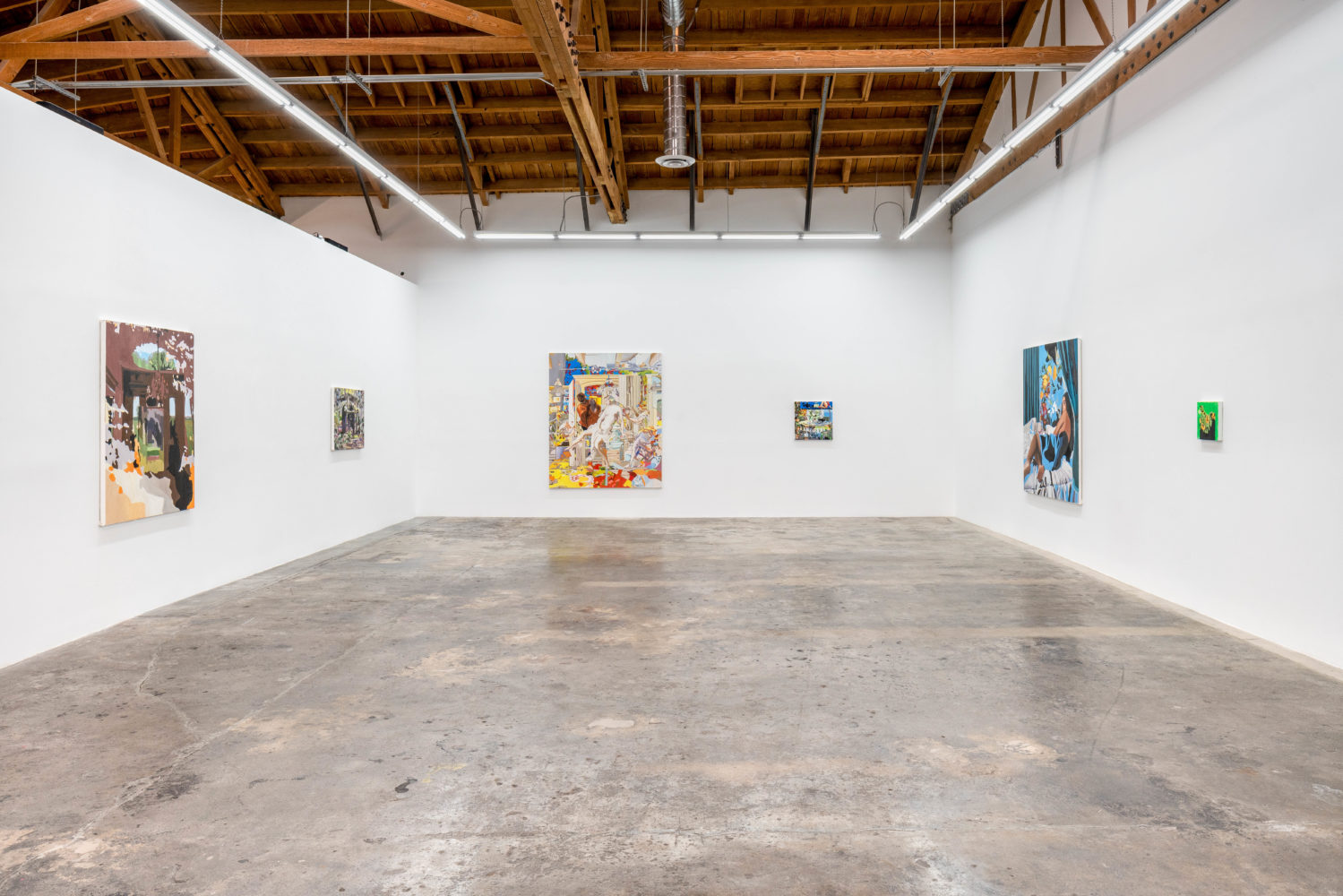
Installation view of Darryl Westly’s “Interior/Exterior” show at PARISTEXASLA.
Courtesy of PARISTEXASLA.
DW: I think what shaped my process the most at that time was the dedication to process and the importance of considering a work from its inception to finish. From color mixing to painting, casting to sanding, the studio was organized in a fashion that allowed for each step in Jeff’s creative process to be evaluated and considered. I was also able to learn from a talented team of artists, artisans and managers. I learned more sophisticated techniques of painting, woodworking, sanding, casting, graphic design in addition to skills involving exhibition design and art handling.
WW: Can you walk us through “Interior/Exterior”?
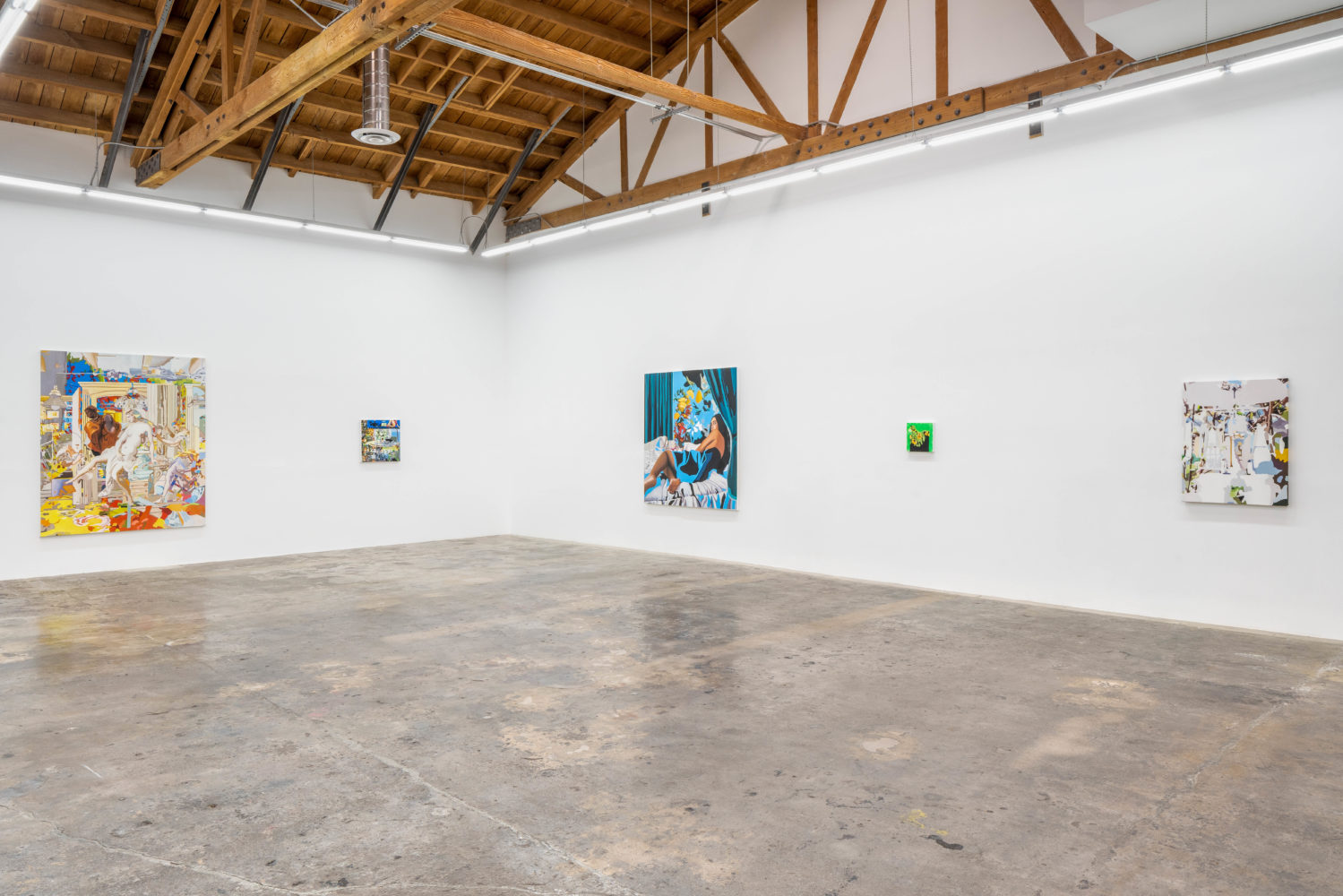
Installation view of Darryl Westly’s “Interior/Exterior” show at PARISTEXASLA.
Courtesy of PARISTEXASLA.
DW: I’ve explored a variety of concepts in my work, but in the lead up to this current exhibition, I started to think a lot about how social media has given us the ability to discover and acknowledge perspectives outside of the common Western lexicon. As ideas and information have become more easily transferable, our understanding of what defines popular culture has expanded.
Much of this show deals with expansion. The expansion of space through compositional elements on the canvas and the expansion of thought in regard to ourselves, and the world that surrounds us, hence the title “Interior/ Exterior.”
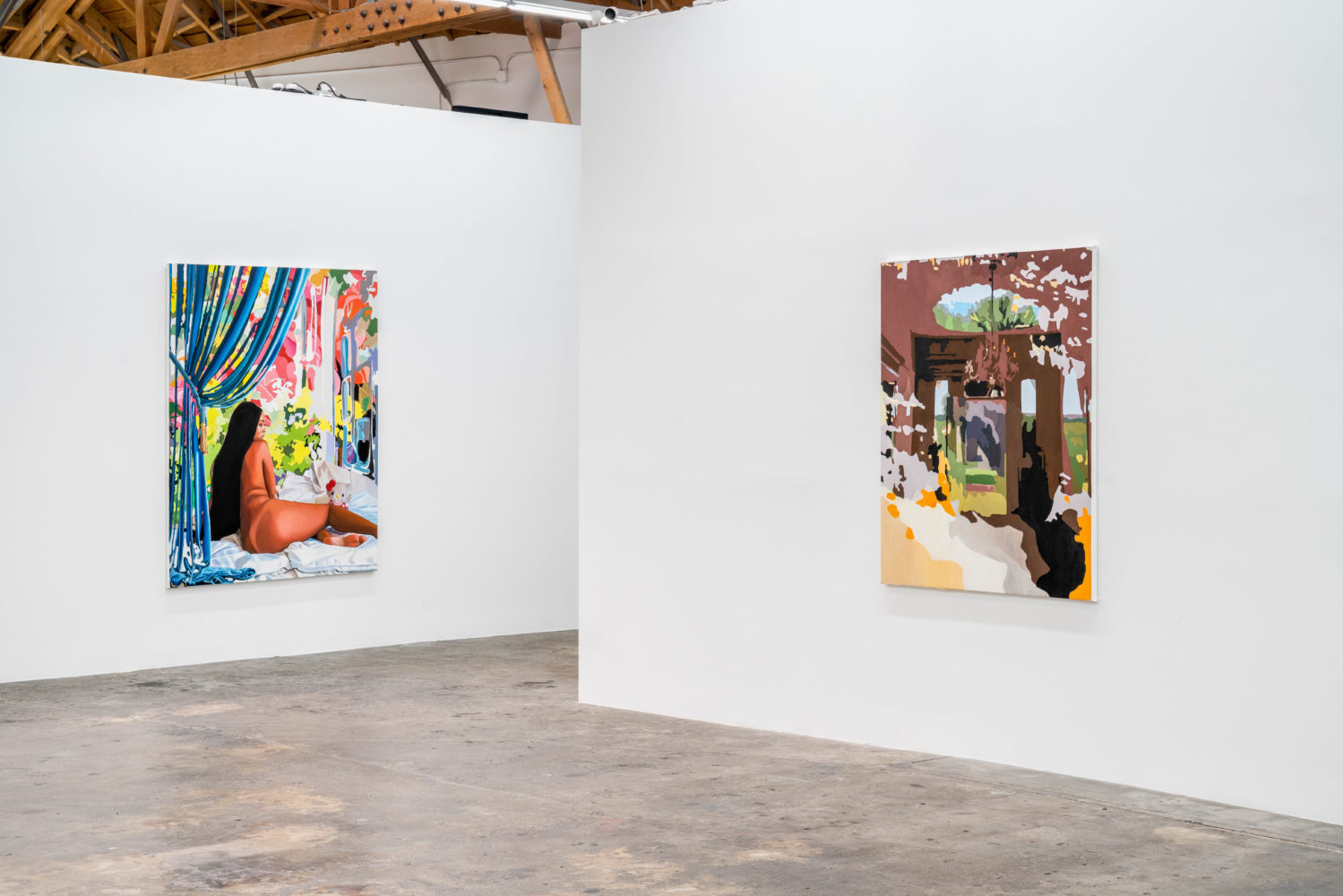
Installation view of Darryl Westly’s “Interior/Exterior” show at PARISTEXASLA.
Courtesy of PARISTEXASLA.
With “Interior/Exterior,” my intention was to reevaluate my relationship to the past through the compression and melding of historical iconography with contemporary visual culture. The work deals with ideas of ethnicity, Western culture and representation while simultaneously investigating ideas of formalism and naive idealism. Within the individual pieces, I break down and dissect complex shapes and forms into simplified fields of color or I utilize photorealistic rendering techniques in order to make the work appear not simply as a sum of parts, but as a whole.
Experimenting with light, shadow and perspective, I aim for the composition of each painting to balance against the imagery, allowing for a sense of visual harmony. I use natural American iconic imagery like the Rocky Mountains, I reference painters like Frederic Brazille and [Jean-Auguste-Dominique] Ingres and hint at images of dilapidated slave quarters from the South or a bright vibrant dining room set awash with primary colors. Viewed altogether the work creates an allegory of our shared history and experience as people, whether good, bad, tragic or comedic through the guise of painting.
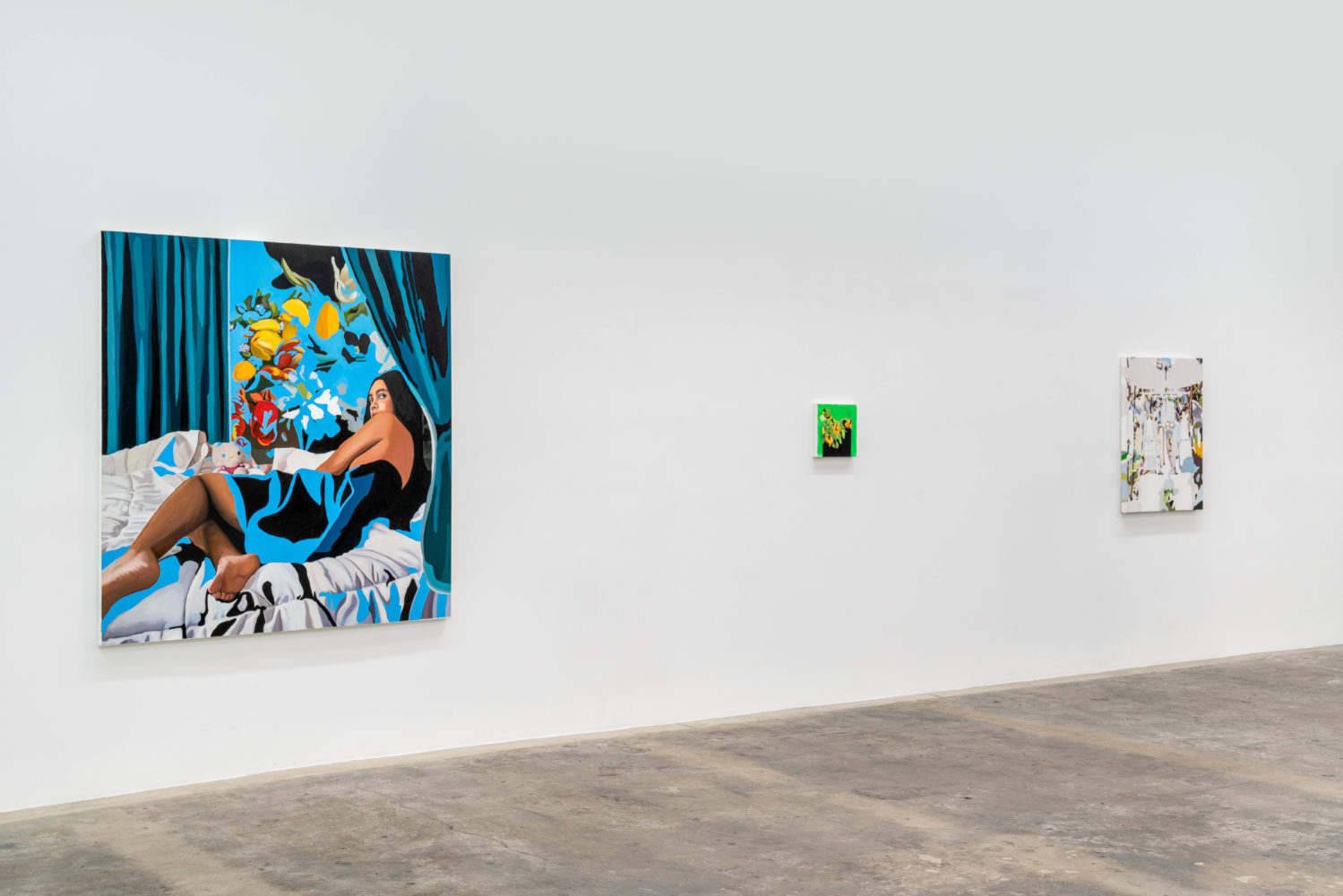
Installation view of Darryl Westly’s “Interior/Exterior” show at PARISTEXASLA.
Courtesy of PARISTEXASLA.
WW: How would you best describe the types of paintings you create today?
DW: Process-driven allegorical oil paintings that fluctuate between representational and abstract.
WW: You have a studio in Industry City, Brooklyn. What’s an average day like there?
DW: An average day in the studio consists of exercise, emails, and correspondence in the morning, studio visits in the early afternoon, followed by 8 hours of uninterrupted painting while listening to an audio book. Lately I’ve been listening to “Boom” on Audible by Michael Shnayerson, which is fantastic.
WW: With a rise in technology, a heightened awareness of climate change, and more, so much is changing in the world—and fast. Do you feel any specific type of responsibility as an artist today?
DW: My responsibility as an artist is purely to be honest. By bringing honesty and openness to an artwork, I really think it’s possible to work through the shame and guilt that I believe lies at the center of many structural and institutional problems that we face. Not only here in America, but throughout the world. It is my hope and belief that art can be a vessel that allows people to engage with, and express thoughts and ideas they might not have considered or been able to articulate otherwise.



